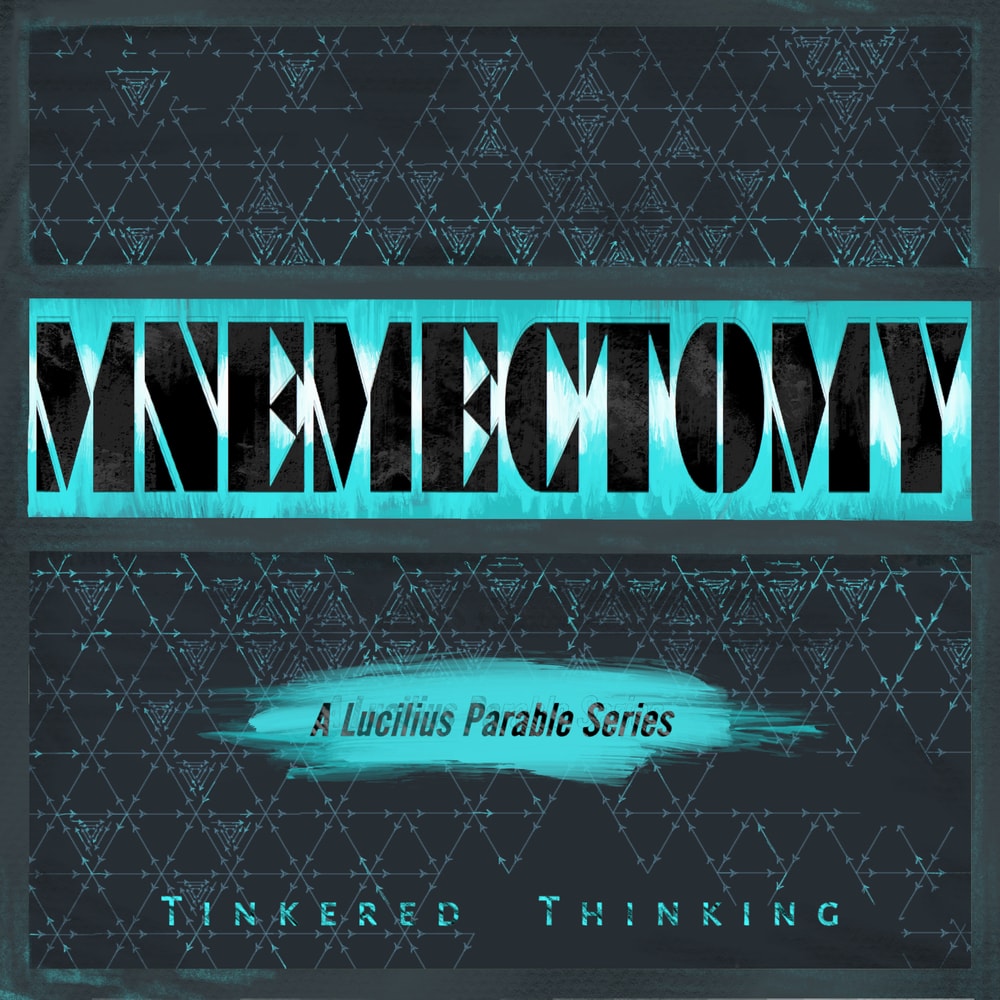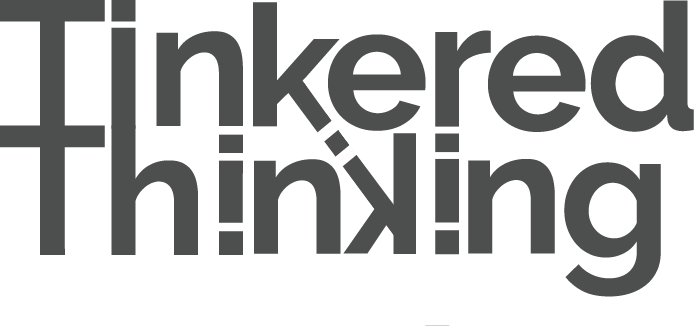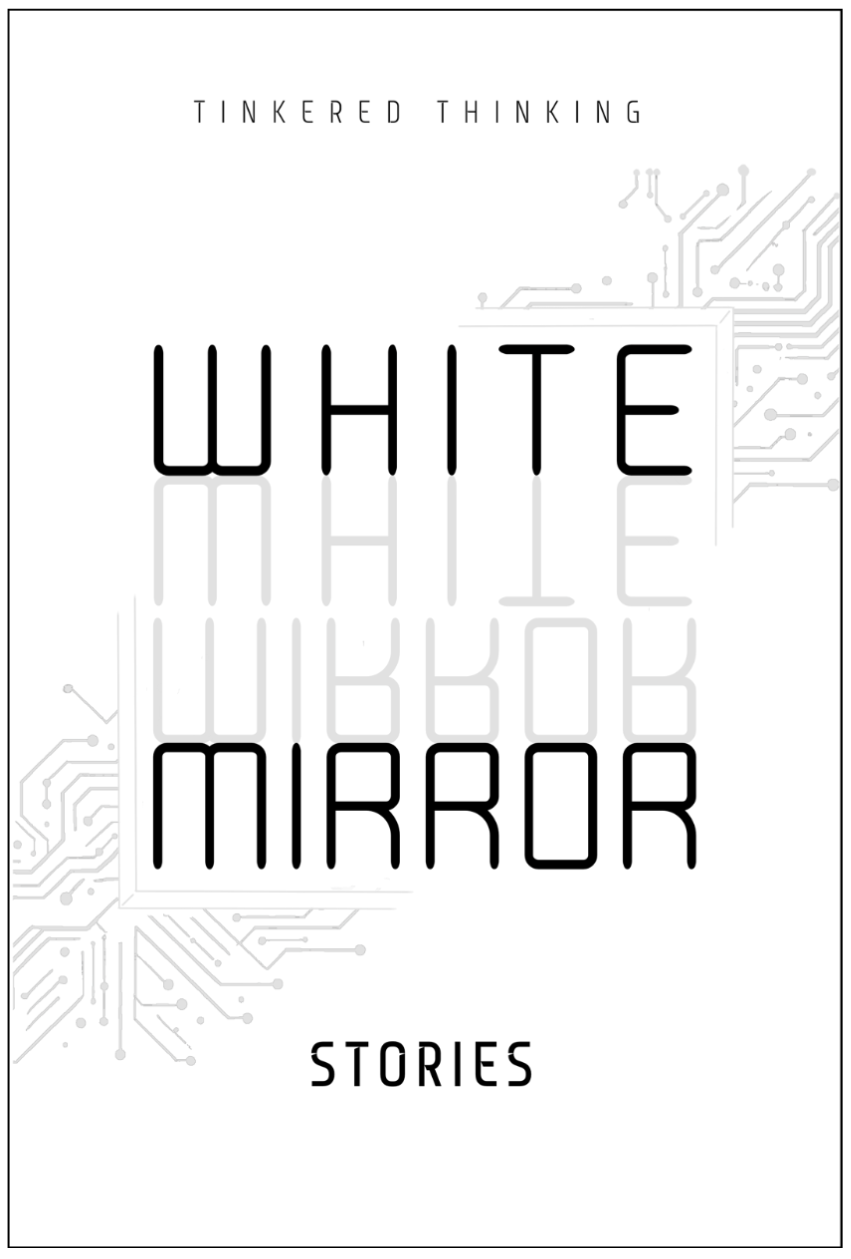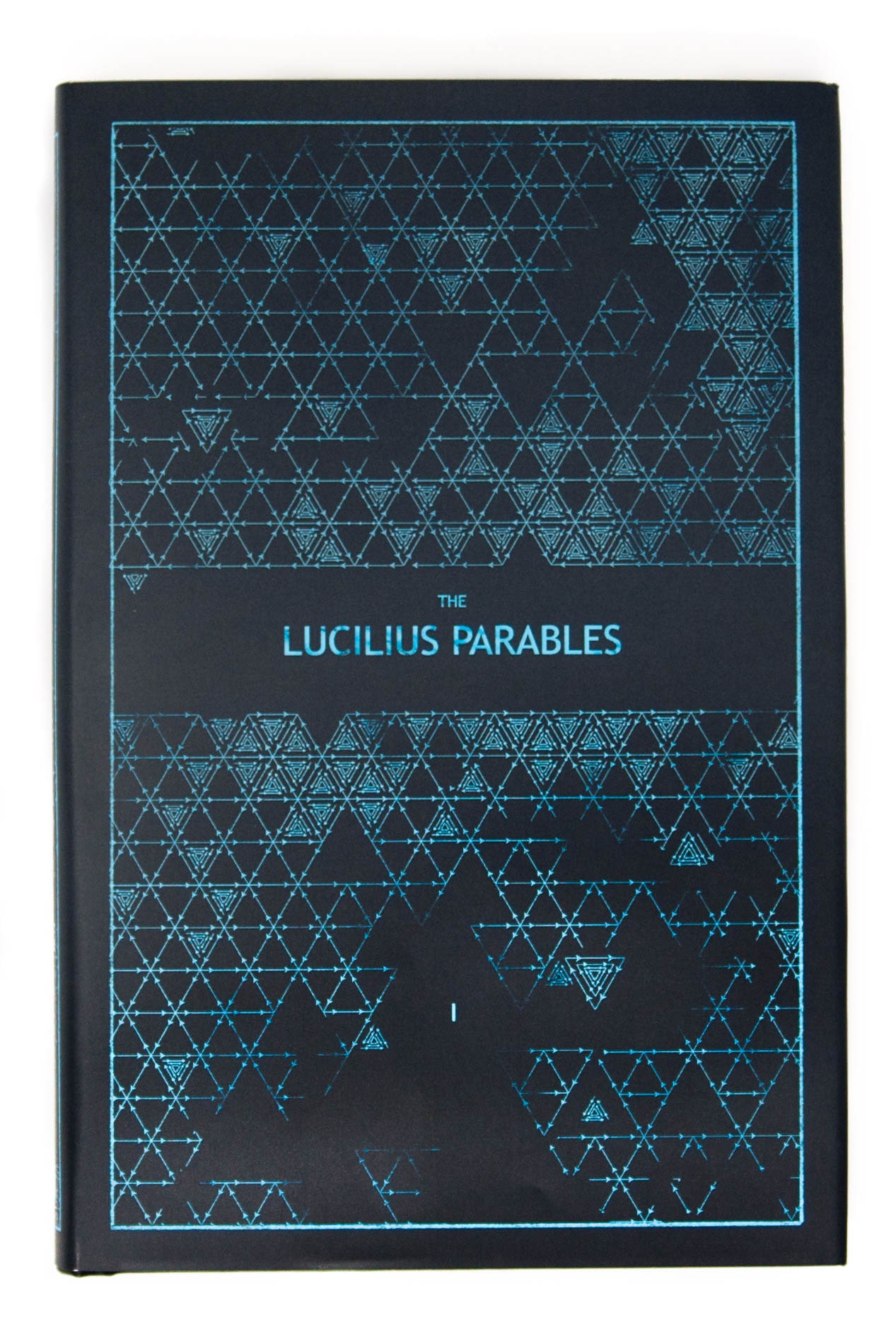Daily, snackable writings to spur changes in thinking.
Building a blueprint for a better brain by tinkering with the code.
subscribe
rss Feeds
SPIN CHESS
A Chess app from Tinkered Thinking featuring a variant of chess that bridges all skill levels!
REPAUSE
A meditation app is forthcoming. Stay Tuned.
FULFILLMENT & FUN
November 23rd, 2022
Things that are fulfilling can be fun. But not all fun things are fulfilling, and oddly, the litmus test is:
convenience.
Most “fun” things ultimately resolve into expressions of convenience: going out to dinner, for example. It’s really convenient when a stranger prepares your food. Even something like travel: someone else built the plane, flies it, set up the systems that allow planes to fly to distant points on the globe, and despite how uncomfortable long flights can be, all of this is enormously convenient when compared to the alternative… driving, or taking a ship across an ocean. And these two conveniences basically compromise the top of the list for things people like to do for fun in many well-developed societies.
But take for instance something that is fun but has no relevance to convenience: playing chess with a loved one, for example. There’s no question of “convenience” or “inconvenience” involved in such a thing, and so it’s something that fits in the overlapping sliver of the Venn diagram that conjoins fun and fulfilling. Strangely, such a wholesome activity has a lot of counter-intuitive and inconvenient roommates in that little home in the center of that Venn diagram. Wholesome activities may be the only category where fun, fulfilling and convenient overlap. When we regard the rest of life, things diverge in very strange ways:
Let’s examine the relationship of fun and fulfillment from the other side: what is fulfilling often isn’t fun! Working hard on a personal project, for example. When it’s finally all done, the feeling of relief is amazing, and the fruits of that work can provide a sense of fulfillment… forever! But such fulfillment is often gained from hardship.. which isn’t usually fun.
The point of juxtaposing fun and fulfilling is to point out the fairly robust idea that a fulfilling life generally means taking the more inconvenient route. This completely contrasts with the usual paths of life which are directed at optimizing and collecting convenience. Getting a steady and stable job, an apartment or house and replicating the usual relationships common to such an existence are far more convenient than say, trying to bootstrap a business with nothing but an idea and a little relentlessness. The former will be seen as normal - which is also very convenient - but risks living a life that almost certainly lacks the potential to experience much greater levels of fulfillment that are possible during one’s short time alive. The bootstrapper will almost certainly be seen by others as weird, and probably lost and wayward. And when compared against the “normal” person, the bootstrapper can easily look like a loser for not having the normal conveniences of life at their disposal. So why does the bootstrapper take such an inconvenient path? Well for one it’s likely to be more fulfilling, but that’s not the full answer. We should probably ask if the bootstrapper even has achoice about following such a path, but that question broaches the murky topic of free will, and that obnoxious realm of discourse is probably better left inside Pandora’s Box. So perhaps it’s best to take a step back and say the bootstrapper regards the more inconvenient path as the more fulfilling one.
The trade off is a simple one:
Would you rather have more comfort and convenience?
or..
Would you rather have a more fulfilling life?
The two aren't mutually exclusive. But it's a definition of degree: more fulfillment likely requires less convenience. Unless of course the inconvenient route taken by the bootstrapper leads to an outsized pay off which can then provide all those missing conveniences. But this is not guaranteed, of course, and that uncertainty is part of the price of admission to such a life.
This opens up a deeper question about the connection between convenience and uncertainty.
Those who can afford more luxury (convenience) are in effect eliminating uncertainty from their lives more and more. Convenience correlates to predictability. Conveniences are reliable, and this reliability helps tame an uncertain future into a familiar shape. The convenience of getting Starbucks on the way to the office helps determine a predictable shape for tomorrow. In contrast, the inconvenient route can be symmetrically defined as a willingness to engage with uncertainty. The bootstrapper may not know where they are sleeping tomorrow, which is.. well - very inconvenient. Few things are potentially more inconvenient and uncertain than being effectively homeless.
But, it’s all about how you look at it. The bootstrapper who sees such an issue as “where am I going to sleep tomorrow?” as part of an adventure with a larger mission is going to experience practically no stress (and maybe even a little thrill!) compared to the convenience-addict who is faced with the same circumstance and sees it as daunting.
In fact, that parenthetical comment in that last paragraph is really the key to all of this. If a person can train their mind to see the difficult, inconvenient path as thrilling… as fun…. Then they really have a golden ticket to the rest of their life.
This has a very strong basis in neurology regarding the dopamine-fueled reward system. Enjoying the struggle is how you crack the code and “have your cake and eat it too.” These sort of sneaky tweaks are generally regarded as unrealistic, and impossible, kind of like cultural myths that everyone likes to ignore and deny. But it is possible to enjoy things that many if not most others see as horribly unenjoyable.
Just as many people shudder at the prospect of uncertainty, others see uncertainty as ripe with options, like an able painter smiling at a blank canvas, or a writer seeing the blank page as a gold mine, pick-ax in hand, lips licked, and boiling with an eagerness to get started. Others are terrified by such open-endedness. Not knowing where you are going to sleep tomorrow can be seen like a blank canvas. The absence of options can be seen as an abundance of options if the muscle of resourcefulness is well maintained and powerful.
The divergence in such life paths among people likely has to do with confusing fun and convenience at the expense of fulfillment.
Children are guided by fun, and given their cognitive development and familiarity with the world, life is quite literally a giant uncertainty that they have fun exploring.*
At some point, people slowly trade in the fun of exploring the unknown for the convenience of comfort. This process is also defined as a shift away from uncertainty as a potential source of fun options towards uncertainty as something to fear - something that directly contradicts convenience because convenience correlates to predictability.
Fun is replaced with convenience.
Fulfillment is replaced with a sense of certainty and safety.
But the thing is, no one is ever completely safe nor secure, and because of this it’s always a false sense of certainty. And that’s all certainty is - a feeling. An emotion. And as convincing, solid and persuasive as it feels, feelings can be incorrect in just the same way a thought based on flawed data can be incorrect. Anyone who revels in their sense of certainty is fooling themselves.
Remember what Feynman wrote: The first principle is that you must not fool yourself, and you are the easiest person to fool.
When uncertainty inevitably forces its way into a person’s life - which it is guaranteed to do given enough time - who is going to have the mental composition to deal with the situation more effectively? The one who collects a life of conveniences? Or the bootstrapper who has become an adept navigator of the inconvenient and uncertain path?
Again, the more inconvenient path proves to be the more useful since the inconvenient path requires a person to exercise the muscle of resourcefulness more often and more deeply than the one caged by convenience.
So will life be fun or fulfilling?
Those who are shrewd and ruthless about what they want out of life can end up with both!
While those who don’t take the time to carefully investigate the distinctions here can be lulled into a life that has… neither: a life that not only lacks fun and fulfillment but which is also fragile to the risk of crumbling beneath the weight of some challenging uncertainty that lurks somewhere in the future, waiting for its inevitable opportunity to become the present.
*Note: we should not confuse conveniences with necessities. A child who has necessities provided for by parents can explore the uncertainty of life and have a ton of fun doing it. Facing the uncertainty of being short on necessities is another matter - one that might be fun for a scrappy adult bootstrapper, but only because there’s a huge difference between the child and the adult bootstrapped when it comes to agency and the ability to make things happen and get things done.
HEALTHCARE
November 22nd, 2022
The construction of the word HealthCare is appropriately ironic. Presumably the compound word evolved from the sentiment behind the phrase: Caring for Health. But we strip out the preposition and reverse-join the words. The irony is in the fact that the caring comes after the health. Not before it.
This is exactly how healthcare functions: it’s almost entirely reactive, not preventative. We wait until the cancer is evident before we do something about it, despite the fact that there’s plenty of researching exactly what sort of protocols can go a long way to preventing cancer in the first place.
This inverted (and unwise) approach is perhaps due to health being at the whims of a capitalist centric society. This isn’t really a bash at capitalism, so much as it is a point about what you can get people to pay for. When death is lurking around the corner, no price tag is too high. But preventative protocols? There’s are much harder to get people to pay for. Peleton might see some success while everyone is cooped up at home with plenty of reason and time to focus on the issue of health, but during regularly scheduled programing the financial incentives for preventative health care just aren’t there.
Putting the verb before the noun only seems to exist on an individual basis, due to an errant interest in the topic. I, for one, think about health every day and I am constantly tinkering with my own protocols with an eye on the long term ramifications of each decision. But this isn’t the norm. Most of my family and friends think I’m a bit crazy when it comes to the issue of health. To be clear, I certainly don’t come anywhere close to the level of a hypochondriac. My interest is driven purely out of curiosity and a desire to feel as good as I can today and tomorrow. Health nut? Well maybe. But I find it interesting. And that’s my point: interest in preventative measures is not a normal nor widespread hobby.
Another way to approach this is like an investment. A few grand in workout equipment might seem like a steep price tag to pony up in the short term, but when compared to the amount of money people will gleefully part with in order to make their severe health conditions resolve… a few grand in workout equipment seems like quite a deal.Four thousand now? Or Four Hundred Thousand later? And of course there’s the awful fact that many of the most preventable conditions that plague people in later years cannot be cured with any amount of money. The comparison of 4K and 400K isn’t really appropriate. The 4K is a deal to a degree that is simply unfathomable.
Does this mean Healthcare as we traditionally know it is completely useless? Well no, getting treatment for a freak accident, for example, is quite useful. To say the least. As with most issues the issue is in need of nuance. It’s not a matter of either, or. It’s a matter of both, and a question of what ratio.
Healthcare which is often seen as THE option is better regarded as a last-resort parachute. Something you hope to never use, but something you definitely pack every time you wheel out toward the runway. Caring for Health out to be the main focus and deserves the lion’s share of effort. It helps to see the body as a sort of curious puzzle that can be tinkered with, optimized and leveled-up. Curiosity turns a massively complex topic into a bit of a fun riddle that doesn’t just have one answer.
Curiosity, though, is often in short supply for many people. Requiring a good question, such as:
What can I do today that might make me feel better now, or raise the likelihood that I have a good day tomorrow?
If that question already has a solid answer, we might move on to: what’s the next smallest variable that I could tinker with to see if I can have a little bit more energy, focus, and strength?
MEDITATION DRAFT: SESSION 2 THE BODY'S PENDULUM
November 21st, 2022
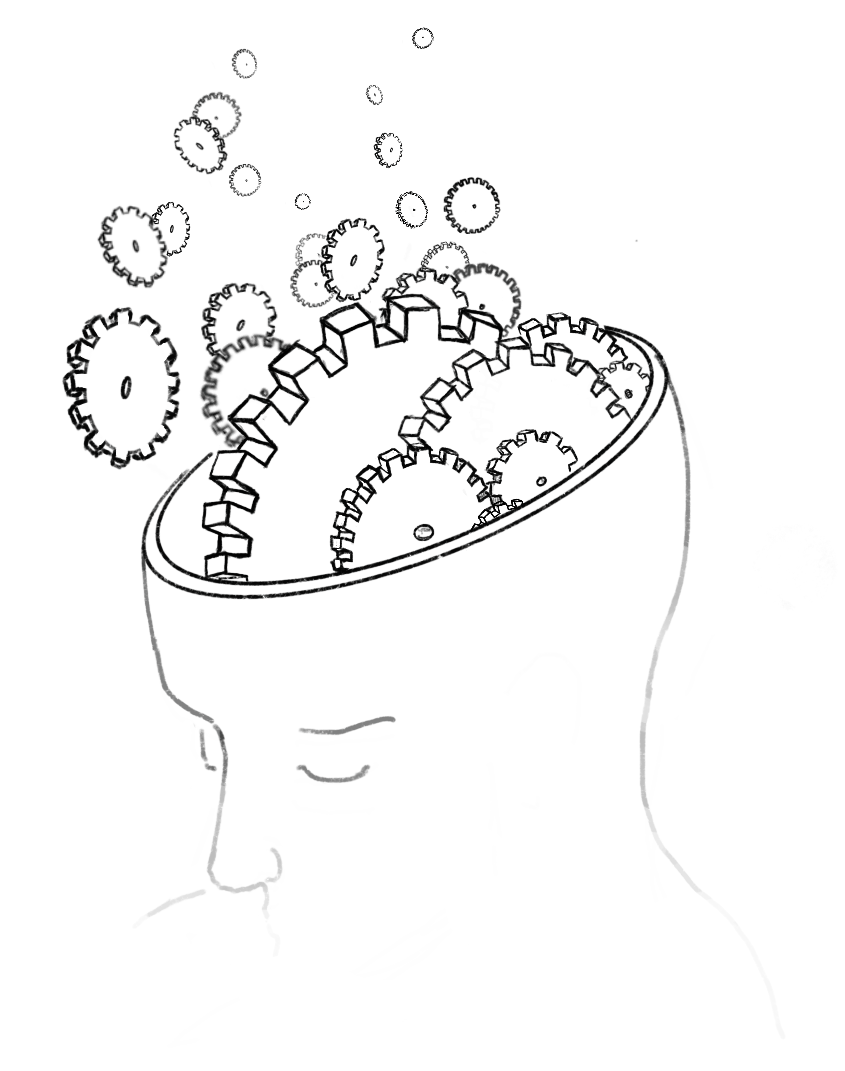
On Monday Tinkered Thinking releases a draft of a lesson from the forthcoming meditation app, currently called The Tinkered Mind (If you can think of a better name, please reach out. I'm not crazy about the current one, but I'll be damned if I let an imperfect name keep me from developing a good idea.) The rationale here is simply to stave off project stagnation by taking a wish to work with words on a daily basis (Tinkered Thinking Posts) and combine it with adjacent projects. This also gives regular readers a chance to get a preview of what I'm cooking up and to get feedback before the app launches, which is a tactic that has proved extremely useful with other projects unrelated to Tinkered Thinking.
One further introductory note: The goal of this meditation app is predominantly aimed at helping individuals build a robust daily habit by breaking that habit down and tackling it's consitituent parts one at a time and aiding the process with a new and innovative way of tracking progress, the likes of which has not been seen in other meditation apps or habit tracking apps.
Again, if you have any feedback, please reach out via Twitter
Session 2: The Body’s Pendulum
Take a comfortable seat. There’s no need to worry about a particular posture just yet. That will be covered soon in a future episode. For now, just try to be comfortable. For this session we are going to explore a couple breathing techniques, their different physiological effects, how such breathing methods aide a meditation practice and how they can also be leveraged to increase the likelihood that the habit sticks.
Once you’ve found some degree of comfort, take a deep and relatively quick breath through the nose, keeping the lips closed and the tongue gently resting against the roof of the mouth. Pull the air down into your core. Allow the ribcage to expand outward instead of lifting up toward your chin. Briefly hold the breath for a moment or two, and then slowlyyyy exhale. Try to make the exhale roughly twice as long as it took to inhale the breath.
A count can be helpful to get a feel for this. Inhale till 4, starting on
1 - 2 - 3 - 4
then hold for a moment and exhale
8 - 7 - 6 - 5 - 4 - 3 - 2 - 1.
And let’s repeat, inhale till 4 starting on
1 - 2 - 3 - 4
then hold for a moment and exhale
8 - 7 - 6 - 5 - 4 - 3 - 2 - 1.
If it feels as though you can’t take a deep enough breath it might be because the lungs are already full. It’s common to have very shallow breathing caused primarily by never actually evacuating the filled lungs, like trying to fill a glass of water that is already full, so it can be helpful to pay extra attention to fully exhaling.
Inhale again till 4, starting on
1 - 2 - 3 - 4
hold for a moment and then exhale
8 - 7 - 6 - 5 - 4 - 3 - 2 -1
Continue with breathing with this method of long exhales for a few more moments. The purpose of this specific rhythm for the breath with a long exhale is to simply help relax the body. By breathing in this way we engage the parasympathetic portion of the autonomic nervous system and create a small cascade of changes in our immediate biology. These deep breaths with long exhales slow the heart rate and in turn: we feel calm. This technique can also be used to help you get to sleep. And for those who struggle with a lot of anxiety it may take a little while to feel that sense of calm, but this method of breathing will eventually be particularly effective with anxiety.
All future guided sessions will begin and end with a few breaths using this deep exhale method.
The purpose of it at the beginning of these sessions is two fold - not only does it have a positive effect on our quality of attention and focus, but it also just feels good, and in order to help maximize the chances that we continue developing the habit we’re after - especially during these early days - it’s incredibly powerful to simply get into a state that feels good - it makes it more likely that we’ll return to it tomorrow, because we are drawn to positive states, especially those that can be reliably reproduced.
After four or five of such breaths, allow them to even out so that exhales are the same length as inhales. Ideally each inhale and each exhale should be 5.5 seconds long. This method of breathing has been referred to as Coherence Breathing and it is optimal for the body’s efficiency, placing the heart, lungs and circulatory system into a state of systemic coherence.
Counting can again be helpful here. I’ll count out 2 sets of inhales and exhales.
Breath in on:
1 - 2 - 3 - 4 - 5
And breath out on:
5 - 4 - 3 - 2 - 1
Breath in:
1 - 2 - 3 - 4 - 5
Breath out:
5 - 4 - 3 - 2 - 1
Continue breathing like this for the next few minutes.
This slow, even and equal breathing method is what we will aim for during the bulk of each session. So moving forward we will bookend each session with the deep exhale method, and we’ll fill the middle of the session with our equal length Coherence Breathing.
Now, in the long run, you’ll find what works best for you, but for the first month of our meditation program here, this structure for the breath for each session is designed to help you feel as refreshed and calm as possible by the time the session is over. And as mentioned before, part of the aim here is that you’ll naturally be incentivized to come back tomorrow to get more of this positive, feel-good state, created particularly by those long slow exhales.
But of course it’s not just an incentive for tomorrow, it’s also the first thing we can do in the context of this practice that will immediately add to the quality of your whole day right now - and that is the entire reason why this meditation app exists - to try and help as many people as possible raise the quality of their life on a day to day basis. Taking time to slow down and make a meaningful impact on your own biology with a breathing practice is one of the fastest and most effective ways to make the rest of the day a little bit better. It’s a subtle tweak that has a profound effect.
Breathing practices are of course ancient, and in fact the word yoga originally had little to do with stretching muscles and in fact referred specifically to breath work. There’s recently been a resurgence of interest and research in breathing, and the routine just described is informed by a lot of that new research.
Eventually, as we move into exercises that engage the mind, the breath will take on another level of importance. The breath is like the body’s pendulum, it’s the one thing that we can’t stop doing, and because of this, it’s an excellent anchor for exploring the nature of our attention and focus. The breath will become a proxy for the present moment, and what I mean by that is often we don’t even realize we’re breathing, we do it unconsciously, and the same goes for the present moment. Often we’re lost in thought, daydreaming about the future or worrying about something that happened in the past, and we fail to notice what is going on right now. And if any of that sounds confusing or odd, don’t worry, we’ll get to it with increasing depth in future sessions.
For now, as we come to the close of this session, begin the transition from equal, even breathing back to the long slow exhales.
Breath in till 4 on
1 - 2 - 3 - 4
And… Breath out
8 - 7 - 6 - 5 - 4 - 3 - 2 - 1
Breath in, and continue these slow exhales for a couple more breaths as the session comes to a close.
A LUCILIUS PARABLE: ODDLY EVEN
November 20th, 2022
The barman placed the cold drinks down on the bar before Lucilius and Lucilius picked one up and handed it to his beautiful date. The two smiled and clinked glasses.
Lucilius announced: “Vashe Zdorov’ye!”
His date laughed. “Cheers!” She said raising her glass.
The cold liquor was hot and sweet, and Lucilius savored the taste as music drifted through the lobby. He breathed deeply, letting the good day wash over him, and as he looked around, his eye caught a rare sight. Off in a corner was a table for two with a built-in chessboard.
It was too perfect. Lucilius looked to his date. “Do you know how to play?” He asked, nodding at the chess table.
“Yes,” she said.
“Let’s play!” Lucilius said, standing up from the bar stool.
“No,” she said. Lucilius abruptly stopped.
“Why not?”
“When I was young my cousins taught me how to play, and then they won over and over and after enough defeats I stopped because it wasn’t fun and I swore to myself that I’d never play ever again.”
Lucilius sat back down, dejected. How unfortunate, he thought. And aggravating. It was a common problem. Lucilius had many friends who refused to play the game because they’d simply never made it through that brutal learning curve that comes with trying to pick up the game.
Lucilius looked around at the beautiful lobby, listening to the music, and back at his date. It was so perfect, and here was such a pleasant opportunity, ruined by some inconvenient little fact. He personally had no interest in winning. It was just fun to play - a nice way to spend a thoughtful and attentive time with someone else. Lucilius sighed, figuring he’d be better off if he just let go of the idea and try to enjoy the time regardless.
But then a different idea caught his mind.
“Wait a minute,” Lucilius said, standing and digging into his back pocket for his wallet.
“I’ve got an idea. Come with me.”
He walked to the chessboard and his date reluctantly followed, her expression growing soured.
“I told you I do not want to play,” she said.
“Let’s try a different version,” Lucilius said. “I just thought of it.”
He sat on one side of the chessboard and pulled a coin from his wallet. He smiled.
“Ok, this is what we do. We each make a move, and then we flip the coin. If it lands on heads we keep playing and we each make another move, and then flip the coin again. But if it lands on tails, we will switch sides!”
His date was skeptical but curious. She sat down and her eyes glanced over the pieces. She took a sip of her cocktail and set it down.
“Ok,” she said.
Lucilius pushed his King’s pawn out two spaces, and his date followed suit with her Queen’s pawn. Then Lucilius eased a thumb under the coin and flicked it up into the air. He caught it and slapped it onto the back of his other hand.
“Tails!”
The two stood up and swapped places.
“Well, it’s your turn again,” Lucilius said. His date smiled at the curious reversal and the two kept playing, flicking the coin up into the air every couple of moves and occasionally swapping sides.
When Lucilius finally made the mating move, the two were a little sad. Bittersweet that the game was over. And for a moment Lucilius figured his date was disappointed that her side had lost.
“I guess I didn’t really win,” Lucilius said, looking at his date. “And you didn’t really lose.”
There was a question in her expression as she glanced at the board again and back at Lucilius. He shrugged.
“We both contributed to both sides. I contributed to the losing side and you made moves for the winning side. We both sort of won.”
A smile lit up her face and the two lifted drinks and clinked to the game made bittersweet - not from defeat, but simply because it was now over.
BODY AS PUZZLE
November 19th, 2022
For many years I’ve been tinkering with just about every variable related to health that I can think of. For a variety of reasons, but for two in particular. One is the idea that subtle tweaks made with the right knowledge can have huge effects, and the second is simply that the body is a bit of a puzzle, and it’s fun to continually perform experiments and learn about it - it’s delightful to think that I’m a system that is experimenting on itself in order to try and understand it’s self as a system better.
Another aspect of this search and tinkering, which I’ve only recently realized is that I have a very high degree of interoception compared to most people. This is the ability to feel things that are going on inside your body. For example I can count my heartbeats without putting a couple fingers to my wrist or neck. I can simply feel my pulse, nearly body wide, and that signal is strong enough that I can count heartbeats while walking, I don’t even have to be sitting still in order to “hear” it. This high interoception has also been the reason for chronic discomfort. For the majority of my life I felt much like I was wearing a second skin - something uncomfortable, like a wet suit, and like many people, I struggled with getting lean, despite working out very consistently and being fairly mindful about my diet. This is despite the fact that my hunger has pretty much always been off the chart. I was the sort of person who could eat a whole large pizza and then seriously contemplate ordering a burger. The feeling of an appetite simply never went away it seemed.
Finally, I recently cracked the puzzle on this tangle of symptoms. After learning about research regarding fermented foods from the Andrew Hubberman podcast earlier this year, I started eating kimchi quite regularly, and there were a few improvements. But then I moved at the beginning of the summer and quite suddenly I became very learn, had a ton of energy, and frankly my body had never worked better. I thought it was the new variety of kimchi I was religiously eating. But then I moved again and the incredible shape and function of my body faded back to the old normal. I tried different kimchis lazily thinking that it was perhaps a specific sort of culture of bacteria in the kimchi I had been eating that was responsible.
After a few more months of cycling through different varieties of kimchi it was clear I wasn’t anywhere close to replicating the incredible shape I was in during those summer months.
So I started researching the predominate species of bacteria that were in kimchi. I knew one of the most important signals of what I experienced during the summer is that my ubiquitous hunger had radically changed. I was barely hungry and felt satisfied half way through meals. Suddenly questions that I should have been asking months earlier started topop up:
What is the mechanism of hunger? Is it just Ghrelin? Or is there more going on?
What turns off a sense of appetite?
Is there any research about strains of gut bacteria and how it relates to the mechanism of hunger and appetite?
This is where things get interesting: I learned about GLP-1 or Glucagon-like peptide-1. It’s produced by a specific type of endothelial cell and it’s biphasic, meaning simply that it turns on twice. GLP-1 is largely responsible for turning off hunger. This lead me to a fairly robust assumption: My GLP-1 levels must be horribly low because my hunger never turns off.
But It did during those couple summer months.
So is there a connection between gut bacteria and GLP-1
You bet. Some gut bacteria can absolutely demolish GLP-1 production, while others can increase it by 300X.
It was at this point in the feverish googling and reading that I remembered an important detail about that summer I’d totally forgotten about. I had taken a round of Bio+ K which is essentially a yogurt that purports to have something like 50-80 Billion live bacteria in each little container and I’d downed 6 within a 36 hour period.
So then I started cross-referencing the specific strains listed on that product with researched connections to GLP-1. Lo and behold I had flooded my system with some powerful GLP-1 agonists at the beginning of the summer. The new theory was that they had simply died off, and so my body went back to it’s former shape and function.
This little research session was about two weeks ago and since I’ve inundated my system with a number of rounds to repopulate my gut with these GLP-1 agonists, and lo and behold the effects I saw over the summer are beginning to return. My hunger is far more manageable, and I’m shedding weight again.
This has lead me to wonder. Perhaps the obesity epidemic is a crisis of gut bacteria?
But is there anything that could potentially bolster that idea, as in, what would cause such a huge disruption of gut bacteria across such a big population?
The answers may be fairly obvious. A round of antibiotics can seriously disrupt a person’s gut, and we pump livestock full of antibiotics. Could meat treated with antibiotics be killing off healthy bacterial colonies in people’s guts? It certainly seems plausible.
There’s also things like Glyphosate - weed killers and other insecticides and pesticides which percolate into the food we eat - all which is equally lethal to the sort of bacteria we have in our digestive system.
The proof may very well be in the pudding. Literally.
The issue of gut bacterial health might be a crisis of friendly fire. The practices we have adopted to kill off bad pathogens may very well be killing off all the good stuff we need.
It may also help explain the radical changes people often observe when they move to a different part of the world and see changes in their body - why the French can eat in ways that seem as though it would make them obese and yet they stay lean. Gut bacteria is bound to be different from place to place, especially if regulations regarding food additives, ie. Antibiotics, pesticides, etc.
This is all conjecture of course. But the ancedata of my personal story certainly points out the radical power of gut bacterial make up. Having replicated the results twice now, it’s hard not to be convinced that there’s a very easy and simple solution to a couple issues that I struggled enormously with. A subtle tweak with profound effects…
-compressed.jpg)
